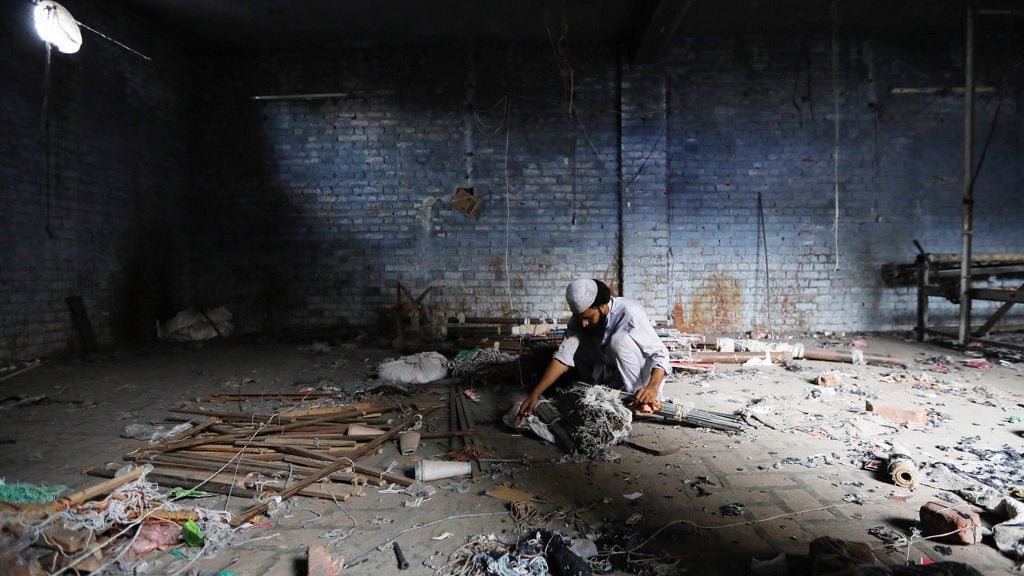Cash-strapped Indian states could run up debts of up to $110 billion this year
States in India—which already have higher debts than states in other BRICS and emerging countries—will be forced to borrow even more this year.


States in India—which already have higher debts than states in other BRICS and emerging countries—will be forced to borrow even more this year.
The Covid-19-related lockdowns have hit the revenues of Indian states at a time when it will be very hard for the Narendra Modi government to cough out it’s share of income to them. Given the situation, the gross market borrowings of Indian states is estimated to shoot up to Rs8.25 lakh crore ($110 billion) in the current financial year as compared to an earlier estimate of Rs6.09 lakh crore, said research agency India Ratings.
“The states have to maintain certain expenditures, such as salaries, important schemes, and increase spending on healthcare to tackle Covid-19. So, a rise in borrowing is inevitable,” said Pulapre Balakrishnan, professor of economics at Ashoka University.
In India, the central government accounts for around 43% of the states’ revenues and the remaining 57% is a combination of states’ own tax revenue and non-tax income.
States versus centre
The Covid-19 lockdown caused a revenue loss of Rs97,000 crore for 21 Indian states in just April.
The overall impact would be much higher as India was under a complete lockdown for nearly 80 days starting March 25. Now, even as the nationwide lockdown has ended, economic activity has not completely picked up as some areas continue to be shut due to a higher number of Covid-19 cases, and as people in other regions continue to stay indoors to avoid contracting the virus.
In such a situation, several Indian states are at loggerheads with the Modi government over the sharing of tax revenues and compensations. Since the pandemic-related lockdowns have caused a loss of revenue for the Modi government, too, the situation might worsen.
“If the centre is not able to collect enough revenue or misses its target, it will have a direct bearing on states. The funds budgeted for the states will no longer be available,” Balakrishnan of Ashoka University said.
Falling short
India’s tax collection numbers—post the spread of pandemic—tell a story of dwindling revenue. The collection of good and services tax (GST), which subsumes several taxes, hit a record low in April when the nationwide lockdown was at its peak.
After April, the collections have improved. But this should be taken with a pinch of salt. While the numbers do signal a revival in business activity to some extent as curbs were eased, they were also buoyed by deferred taxes, stated Mumbai-based Centrum’s economic research report.
But blaming low revenue collection on lockdown merely would be unfair.
Even before the pandemic drove a wedge into the finances of the states, the economic growth was already on the downward spiral, and states’ fiscal woes had already deepened.
“Our study of 20 Indian states’ finances suggest that the states’ own revenue collections and their share in central taxes for the financial year 2020 didn’t meet the revised estimates,” said Anuradha Basumatari, associate director at India Ratings.
In the current financial year, the revenue collections are expected to drop further as the economy contracts. Lack of economic activity means the consumption of petrol and diesel will remain subdued. Hence, raising taxes on fuel also won’t be of much help for the states.
In a bid to ease states’ economic woes, the central government recently allowed them to increase the borrowing limit.
But the rise in borrowing has to keep pace with the growth. Only then the debt would be sustainable. “For debt to be sustainable, the rate of nominal economic growth should be ideally higher than the average rate of interest. This is unlikely in the current financial year,” said Basumatari.
The higher cost of borrowing for states will also raise more questions over debt sustainability.
Stuck between the falling revenues and rising debt, the state of finances of Indian states is indeed poor.